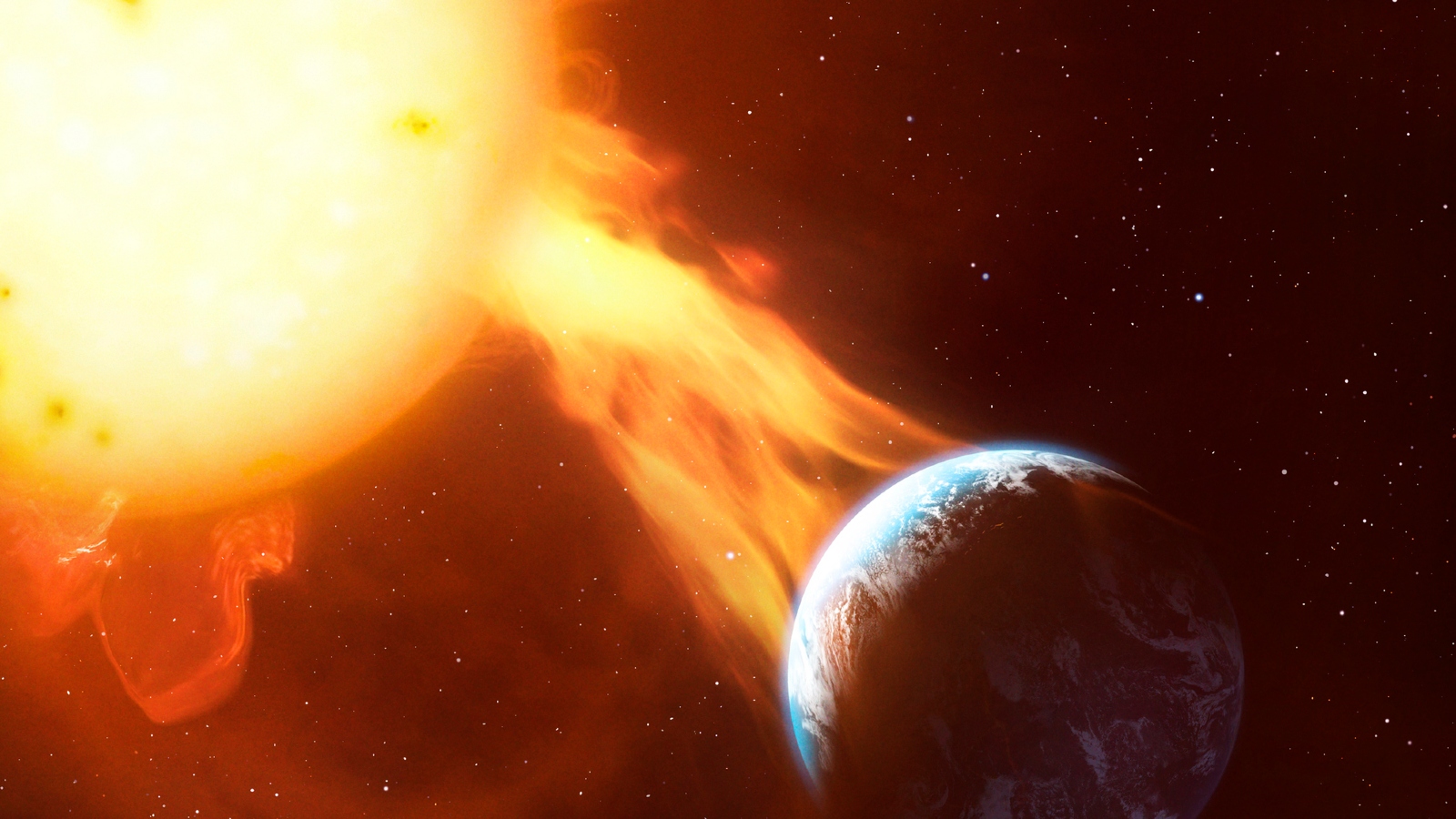
Our sun could produce catastrophic superflares far more often than previously thought — and one may even be due soon — according to new research.
Superflares are solar megastorms thousands of times more powerful than regular solar flares, capable of wreaking incalculable damage as they fry electronics, wipe data servers and send satellites tumbling from space.
Past studies, made by observing stars similar to our own, suggested that superflares likely happened once every few thousand years. But now, a new study of 56,000 sun-like stars has revealed that stars like ours may experience powerful superflares much more often than we thought — roughly once every century. However, some crucial questions remain. The researchers published their findings Dec. 13 in the journal Science.
“Our results demonstrate that stars with Sun-like [stars] … can indeed produce superflares,” Valeriy Vasilyev, a doctoral student at the Max Planck Institute for Solar System Research, told Live Science in an email. “Ionizing radiation, UV, and X-rays during a superflare (as well as from a [coronal mass ejection, a plasma wave launched from the sun] if it accompanies the superflare) can have significant impacts. Details such as the impact on Earth’s atmosphere, magnetosphere, and technological systems are important subjects for further investigation.”
The sun is a gigantic ball of plasma whose charged ions swirl over its surface to create powerful magnetic fields. As magnetic-field lines cannot cross each other, sometimes these fields knot before suddenly snapping to launch bursts of radiation called solar flares, which are sometimes accompanied by enormous coronal mass ejections (CMEs).
If these outbursts are facing Earth, the X-rays and ultraviolet radiation produced by the flares knock electrons from atoms in the upper atmosphere, forming an ionized screen that high-frequency radio waves cannot bounce off that leads to radio blackouts. These blackouts occur over the areas lit by the sun during the time of the flare and last one or two hours.
Related: Ancient solar storm smashed Earth at the wrong part of the sun’s cycle — and scientists are concerned
One of the largest solar storms in recent history was the 1859 Carrington Event, which released roughly the same energy as 10 billion 1-megaton atomic bombs. After slamming into Earth, the powerful stream of solar particles set telegraph systems around the world on fire and caused auroras brighter than the light of the full moon to appear as far south as the Caribbean.
Yet some evidence, such as sudden spikes in radiocarbon levels found inside ancient tree rings, suggests that our sun could be capable of producing flares hundreds of times stronger than the Carrington Event. If pointed toward Earth, these storms could prove to be disastrous.
To investigate the likelihood of a superflare being produced by our sun, the researchers behind the new study used NASA’s Kepler space telescope to study 56,450 stars, identifying 2,889 superflares coming from 2,527 stars like our sun between 2009 and 2013.
Compared to previous studies, this is a significant step up in the frequency of devastating superflares, a result the researchers attribute to biases in past experiments, such as only measuring stars with rotation periods similar to our sun.
As most rotation periods (which are tied to solar activity) are difficult to detect, this led a lot of stars like ours to be excluded from prior observations. But the astronomers behind the study developed a new method to work around these biases.
“We employed a new flare detection method developed by our group to identify flare sources in light curves and images with sub-pixel resolution, accounting for instrumental effects,” Vasilyev said. “This method has been applied for the first time to detect superflares, enabling the analysis of a much larger sample of stars.”
However, despite their troubling findings, some assumptions within the study remain unexplored. These include possible unobserved differences between our own sun and the sun-like stars they observed flaring. For example, 30% of these flaring stars exist in binary pairs — two stars orbiting a shared center of gravity — which could be triggering superflares through tidal interactions.
Loose ends such as these will need to be investigated further before we can be sure that the sun is likely to pummel Earth with a superflare soon, the researchers say.
In the meantime, they recommend better forecasting of the sun to predict when it might throw its next extreme tantrum — an endeavor which will be helped by the planned launch of the European Space Agency’s Vigil probe in 2031.
“I hope people will carefully investigate [this question] after reading our paper,” Vasilyev said.
